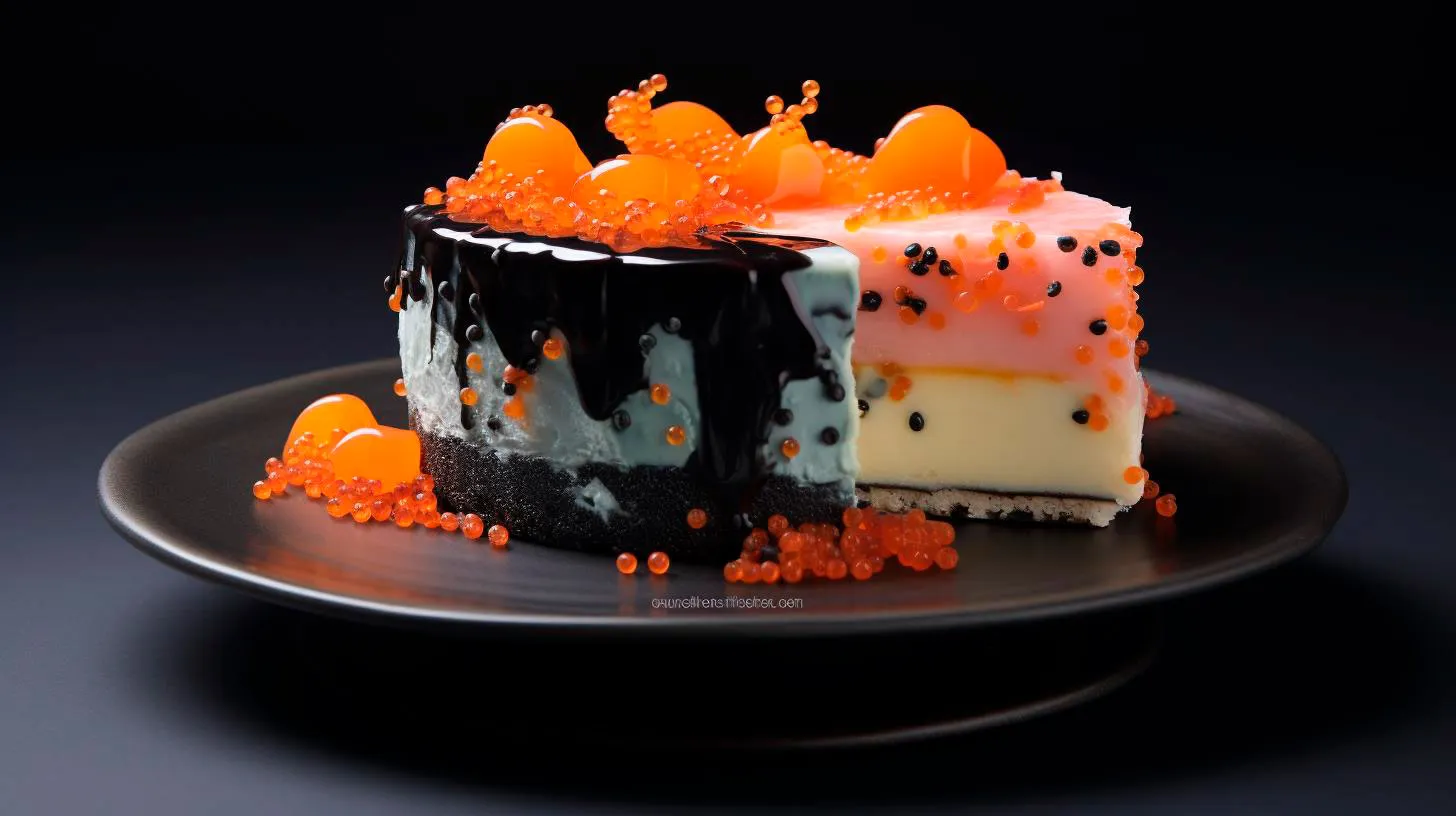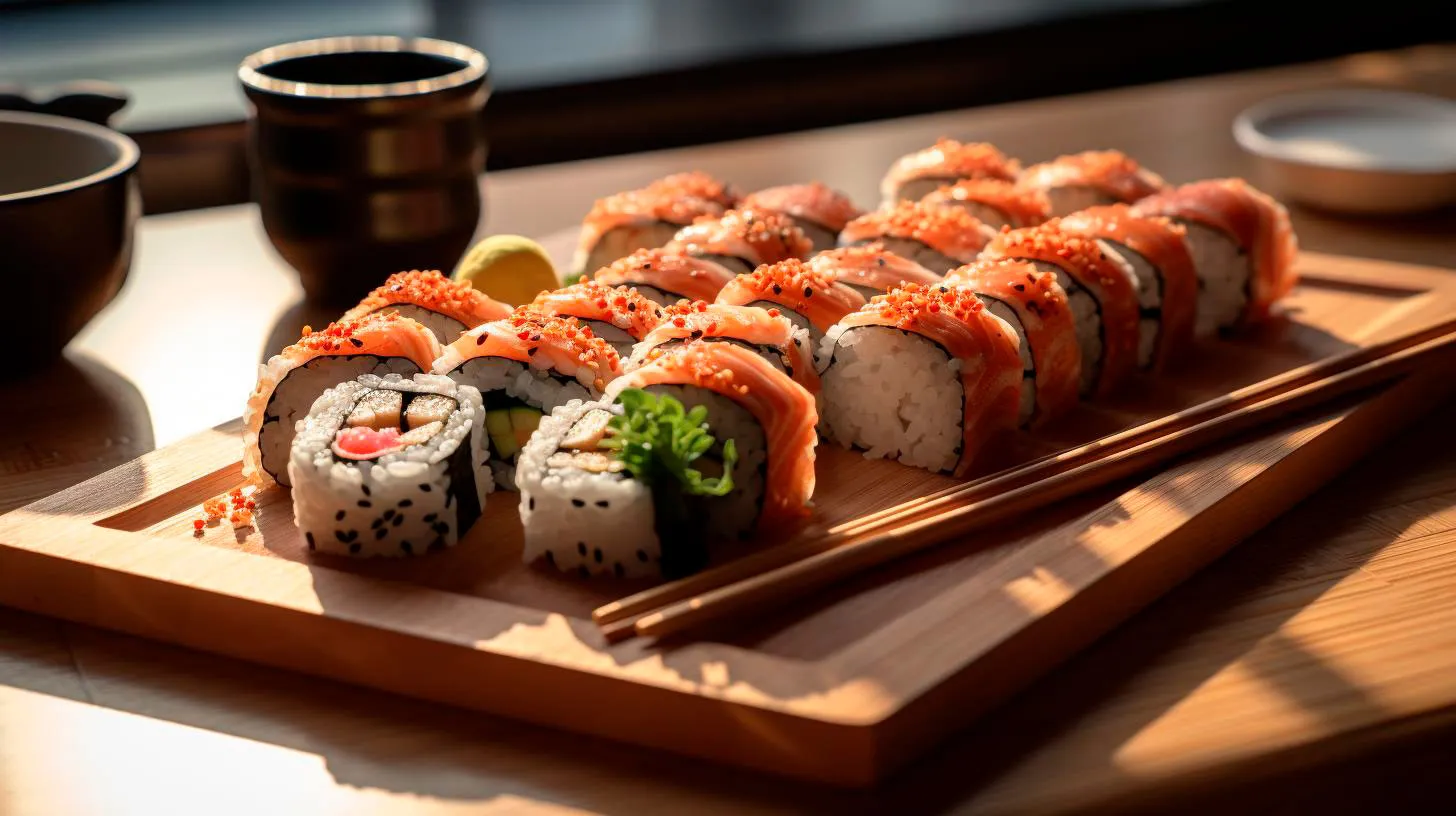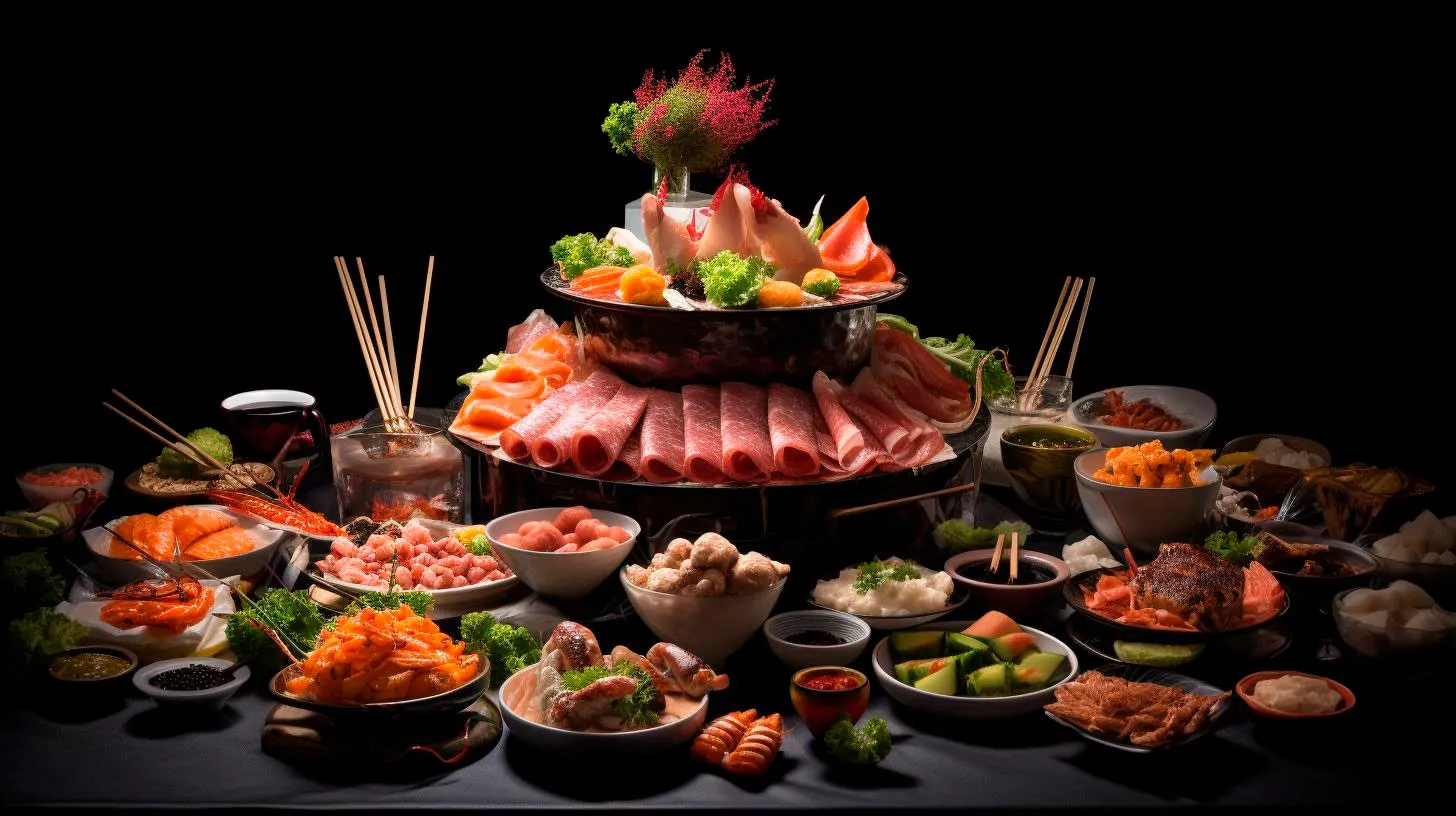The Tradition and Artistry of Nigiri Sushi
The Origins and Evolution of Nigiri Sushi
Nigiri sushi originated in the bustling streets of Tokyo during the early 19th century. It was developed as a method to preserve fish by placing it on top of vinegar-seasoned rice. The vinegar acted as a natural preservative, allowing the fish to be consumed even after days of preparation.
Over time, Nigiri evolved into an art form, with sushi masters perfecting the delicate balance of flavors and textures. Today, Nigiri sushi is renowned for its simplicity and elegance, showcasing the quality of the ingredients in every bite.
The Nigiri Sushi Experience
What sets Nigiri sushi apart is the unique experience it offers to diners. It is traditionally served in small bites, allowing the flavors to unfold gradually. The sushi chef carefully selects the fish, often considering its location, season, and freshness. This attention to detail elevates Nigiri sushi from a mere dish to a culinary work of art.
Key takeaways:
- Nigiri sushi originated in Tokyo during the 19th century as a method of preserving fish.
- Nigiri sushi is an art form, with chefs meticulously selecting and preparing ingredients.
- The small bites of Nigiri sushi offer a unique dining experience, allowing flavors to unfold gradually.
The Artistry behind Nigiri Sushi
From the preparation to the presentation, Nigiri sushi showcases the artistry and skill of the sushi chef. Here are some key elements that make Nigiri sushi a masterpiece:
Perfect Rice
The foundation of Nigiri sushi lies in the rice. Sushi rice is cooked to perfection, seasoned with vinegar, sugar, and salt. Each grain of rice should be tender, yet firm enough to hold the toppings. Achieving the ideal consistency and balance of flavors is crucial to create an exceptional Nigiri experience.
Precision Knife Skills
The sushi chef’s knife skills are honed over years of practice. With precise cuts, they transform a whole piece of fish into a small slice that sits gracefully on the rice. The knife’s angle, the pressure applied, and the speed of the cut all contribute to the delicate presentation of Nigiri sushi.
Pairing of Ingredients
One of the essential aspects of Nigiri sushi is the harmony between the fish and the rice. The chef carefully matches the flavors and textures, ensuring that each component complements the other. This attention to detail creates a well-balanced and unforgettable dining experience.
Key takeaways:
- The rice in Nigiri sushi is crucial and should be cooked to perfection.
- A sushi chef’s knife skills are essential for precise cuts and elegant presentation.
- The pairing of ingredients in Nigiri sushi creates a harmonious blend of flavors.
The Advantages and Varieties of Nigiri Sushi
Nigiri sushi offers several advantages that contribute to its popularity:
Freshness and Flavor
Since Nigiri sushi showcases the fish directly on top of the rice, it allows diners to experience the true taste and freshness of the ingredients. The simplicity of Nigiri enhances the flavors, creating a delightful culinary experience.
Customization and Variety
Nigiri sushi offers endless possibilities for customization. From tuna and salmon to eel and octopus, the choices are vast. Each type of fish carries its nuances and flavors, providing diners with a diverse range of options to explore.
Portability and Convenience
Nigiri sushi is inherently portable, making it an excellent choice for those on the go. Its bite-sized nature allows for easy consumption, whether you’re eating at a restaurant or grabbing sushi to enjoy as a snack.
Key takeaways:
- Nigiri sushi offers a delightful taste of the freshness and flavor of the ingredients.
- There are numerous options for customization, allowing diners to explore a variety of fish.
- Nigiri sushi’s portability makes it a convenient choice for on-the-go eating.
Conclusion
Nigiri sushi embodies the rich tradition and artistry of Japanese cuisine. From its humble origins to its meticulously crafted presentation, every aspect of Nigiri showcases the skill and dedication of sushi chefs. Whether you’re a seasoned sushi lover or new to this culinary delight, Nigiri sushi is an experience that should not be missed.
Next time you indulge in Nigiri sushi, take a moment to appreciate the flavors, the precision, and the centuries-old tradition that have made this dish an iconic masterpiece.
Nigiri Sushi: A Journey into Japanese Culinary Heritage
A Brief History
The roots of sushi can be traced back to ancient China, where it was initially a method of food preservation. However, it was in Japan that sushi evolved into the form we know today. Nigiri sushi, specifically, emerged during the Edo period (1603-1868) in Tokyo, where it quickly gained recognition as a gastronomic delight.
Originally, sushi was consumed as street food, served in food stalls and small sushi joints. However, as its popularity soared, sushi chefs began to refine their techniques, elevating sushi to an art form. Today, nigiri sushi is not only cherished for its incredible taste but also admired for the craftsmanship involved in its creation.
The Nigiri Sushi Experience
Nigiri sushi is characterized by its simplicity and elegance. It consists of a small mound of specially seasoned sushi rice, lovingly hand-formed by a skilled sushi chef, topped with a carefully selected slice of fresh raw or cooked fish, seafood, or other toppings.
One of the key highlights of nigiri sushi is the rice itself. The rice is delicately seasoned with vinegar, sugar, and salt to enhance its flavor, while also providing a smooth and sticky texture. It acts as the perfect base for the flavorsome toppings that are added on top.
The slices of fish or seafood, known as neta, vary in type and flavor profiles. From fatty tuna (toro) to sublime salmon (sake) and sweet shrimp (amaebi), each topping adds a unique dimension to the overall taste experience. The freshness and quality of the fish are paramount in creating a truly memorable nigiri sushi.
The Art of Nigiri Sushi Preparation
Preparing nigiri sushi is an art form that requires skill, precision, and an exceptional eye for detail. The sushi chef, often referred to as a itamae, must possess extensive knowledge about seafood, flavor combinations, and the art of sushi rice preparation.
Here is a step-by-step guide to the creation of nigiri sushi:
- The chef starts by selecting the freshest fish and seafood available, ensuring its quality and safety.
- The sushi rice, known as shari, is prepared by washing and cooking the rice. The rice is then seasoned with a blend of rice vinegar, sugar, and salt.
- The chef shapes the rice into small oblong mounds, exerting gentle pressure to ensure the rice grains stick together.
- A small amount of wasabi, a spicy Japanese horseradish, is applied to the rice before placing the neta on top.
- The chef carefully selects the appropriate neta based on factors such as seasonality and flavor compatibility.
- The neta is cut into precise slices and placed on top of the rice, with the chef using their hands to achieve the perfect balance and presentation.
Cultural Significance
Nigiri sushi not only represents a culinary delight but also reflects the Japanese cultural values of simplicity, precision, and respect for nature. The emphasis on high-quality ingredients, meticulous preparation techniques, and minimalism in presentation are all testament to the Japanese commitment to perfection.
Moreover, nigiri sushi has become an integral part of Japanese social rituals and celebrations. It is commonly enjoyed during festive occasions, business gatherings, and family reunions. The act of sharing nigiri sushi fosters a sense of togetherness and connection.
Key Takeaways
- Nigiri sushi originated in Japan during the Edo period and has since become a global culinary sensation.
- It consists of hand-formed sushi rice topped with slices of fresh fish or seafood.
- Nigiri sushi reflects the Japanese cultural values of simplicity, precision, and respect for nature.
- The art of nigiri sushi preparation requires skill, knowledge, and attention to detail.
- Sharing nigiri sushi is a social experience that brings people together.
So, the next time you have the opportunity to savor nigiri sushi, appreciate the centuries of culinary heritage and craftsmanship that go into every bite. From the selection of the finest ingredients to the meticulous preparation techniques, nigiri sushi truly embodies the essence of Japanese cuisine.
Exploring the Historical Roots of Nigiri Sushi
In this article, we’ll delve into the historical roots of nigiri sushi, tracing its origins and understanding its journey to becoming a beloved delicacy in Japanese cuisine.
The Origins of Nigiri Sushi
The history of nigiri sushi dates back to the early 19th century in Tokyo, Japan. It was during this period that the first version of sushi, known as Edo-mae sushi, began to emerge. Edo-mae sushi was initially sold as street food by sushi vendors who were seeking a quicker way to serve their customers.
Sushi, in its earliest form, was predominantly a fish preservation technique. Fishermen would ferment fish in fermented rice, allowing the rice to act as a natural preservative. The fish was then consumed after a period of time, and the rice was discarded. Over time, sushi evolved into a culinary delight where the rice was flavored with vinegar and eaten alongside fresh fish.
It was during the Edo period that nigiri sushi as we know it today was born. Chefs started to experiment with different toppings and present the sushi in a visually appealing manner. They aimed to create a complete culinary experience that included both taste and aesthetics.
Nigiri Sushi’s Rise in Popularity
In the mid-20th century, as Japan slowly recovered from World War II, nigiri sushi started gaining popularity outside of Japan. The rise of global travel and increased cultural exchange contributed to the spread of sushi worldwide. Additionally, the establishment of Japanese restaurants in major cities played a significant role in introducing nigiri sushi to international palates.
Key takeaway: The evolution of nigiri sushi from a humble street food to an internationally acclaimed delicacy is a testament to its unique flavor profile and visually appealing presentation.
The Art of Crafting Nigiri Sushi
Creating nigiri sushi is not just about assembling ingredients. It requires skill, precision, and a deep understanding of flavors. The process starts with selecting the highest quality ingredients, be it fish, shellfish, or other toppings. Chefs take great care in ensuring the freshness and quality of the raw materials, as this greatly impacts the final taste of the sushi.
The rice used in nigiri sushi is also a crucial element. It needs to be perfectly cooked and seasoned with a blend of rice vinegar, sugar, and salt. The rice should be sticky enough to hold its shape when pressed, but not overly sticky to the point of being unpleasant to eat.
The topping is delicately sliced and expertly placed on the rice. The chef pays attention to details, striving for an aesthetically pleasing presentation. Each piece is crafted with care, reflecting the skill and dedication of the sushi chef.
Key features of nigiri sushi:
- Harmonious combination of rice and topping
- Fresh and high-quality ingredients
- Precise and delicate presentation
Nigiri Sushi: A Healthful Delicacy
Besides its tantalizing taste and exquisite presentation, nigiri sushi also offers various health benefits. The primary ingredient, fish, is an excellent source of lean protein and is packed with omega-3 fatty acids, which are known for their heart-healthy properties.
Additionally, sushi rice contains vinegar, which has been found to have potential health benefits. Vinegar, especially rice vinegar, may help regulate blood sugar levels and aid digestion.
Key advantages of nigiri sushi:
- High-quality protein source
- Rich in heart-healthy omega-3 fatty acids
- Possible digestive benefits due to rice vinegar
In Conclusion
Nigiri sushi has come a long way from its humble beginnings as a fish preservation technique. Its journey through time has transformed it into a culinary art form, adored by sushi enthusiasts worldwide. From its Edo-mae roots to its global popularity, nigiri sushi showcases the skill, precision, and artistry of sushi chefs.
So the next time you indulge in a plate of nigiri sushi, take a moment to appreciate the rich history and cultural significance that lies within each perfect piece.
Nigiri Sushi: A Symbol of Japanese Gastronomy
In this blog post, we will dive into the world of nigiri sushi, exploring its history, ingredients, preparation methods, and cultural significance.
The Origins of Nigiri Sushi
Nigiri sushi originated in the early 19th century in Tokyo, Japan. It was invented by Hanaya Yohei, a sushi chef looking for a way to serve sushi quickly to his clientele. The word “nigiri” means “gripped” or “squeezed,” which perfectly describes the way the rice is shaped and pressed into a small mound before being topped with a slice of fresh fish or other seafood.
Nigiri sushi was originally served as street food, but its popularity quickly spread to high-end restaurants and sushi bars. Today, it is enjoyed by people all over the world and has become a staple in Japanese restaurants internationally.
The Art of Nigiri Sushi
What sets nigiri sushi apart is its simplicity and attention to detail. The preparation of nigiri sushi is considered an art form in Japan, with sushi chefs spending years honing their skills to create the perfect piece of sushi.
The key components of nigiri sushi are the rice, fish or seafood, and a small amount of wasabi. The sushi rice is made by combining sushi vinegar, sugar, and salt with short-grain Japanese rice. The rice needs to be perfectly cooked and seasoned to create the right balance of flavors.
When it comes to the fish or seafood, the options are endless. From tuna and salmon to shrimp and eel, there is something to satisfy every palate. The fish or seafood is sliced into thin, bite-sized pieces and carefully placed on top of the rice. A dab of wasabi is added to enhance the flavors, but it is important to note that in traditional nigiri sushi, the wasabi is already added by the chef, so there is no need to dip the sushi into extra wasabi.
The Significance of Nigiri Sushi
Nigiri sushi is not just a delicious dish; it is also deeply rooted in Japanese culture. It represents the harmony and balance that is valued in Japanese cuisine. The combination of flavors, textures, and colors in nigiri sushi is carefully chosen to create a sensory experience for the diner.
Nigiri sushi is also a reflection of the importance of fresh, high-quality ingredients in Japanese cuisine. The fish and seafood used in nigiri sushi are typically sourced locally and are consumed within a short period to ensure their freshness. This commitment to quality is one of the reasons why nigiri sushi is so highly regarded by sushi enthusiasts.
Key Takeaways
- Nigiri sushi is a traditional Japanese dish that originated in Tokyo in the 19th century.
- Nigiri sushi is made by shaping and pressing sushi rice into a small mound and topping it with a slice of fresh fish or seafood.
- The preparation of nigiri sushi is considered an art form in Japan.
- Nigiri sushi represents the harmony and balance valued in Japanese cuisine.
- The quality and freshness of ingredients are of utmost importance in nigiri sushi.
In conclusion,
Nigiri sushi is more than just a meal; it is a symbol of Japanese gastronomy. Its history, artful preparation, and cultural significance make it a cherished dish both in Japan and around the world. The delicate balance of flavors, textures, and presentation showcases the meticulous attention to detail that Japanese cuisine is known for. So, the next time you sit down at a sushi bar, take a moment to appreciate the beauty and craftsmanship that goes into each piece of nigiri sushi.



